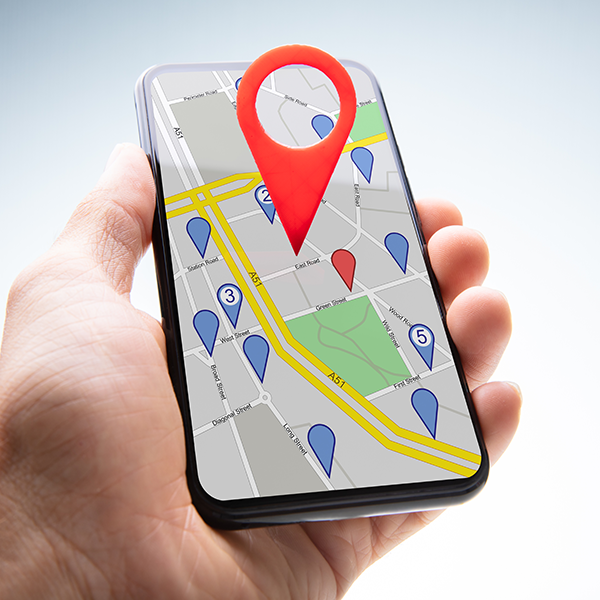Mobile Search is Converting. Do You Know Why?

By Mark Sullivan, CallRail
The proof is in. Mobile searchers are ready to buy. They are taking action from the local search engine result pages by making in-store visits and calling businesses near them to find out more.
Many retailers and other local merchants and service providers are missing out on valuable search and conversion insights, however, by not tracking numbers to follow the source of inbound calls. This is discouraging when a marketer considers that adding a phone number to paid search ads increases click-through rates by 6-8 percent, according to Google.
Measure, Listen & Optimize In-Bound Calls
See a list of popular call tracking platforms at wsm.co/trackscalls
Getting Started
The first item enterprises need to consider when determining whether mobile search is converting for them is their overall search strategy. Makes sense, right? Marketers, of course, need to target the right keywords that will attract customer attention. They can do so by (1) making sure different variations of key phrases are included and (2) by using Google AdWords' geographic targeting capabilities to control costs and focus on sales that are in the correct proximity to the business being advertised.
When bidding on targeted keywords within a specific region, brands should also consider raising the mobile bid modifier in order to increase the chances their ads will be visible on smartphones. Since mobile search results contain less ad space than desktop results, it is necessary to compete aggressively for this limited space to increase mobile traffic and in-store visits.
Click to Call
It is important to remind users that the devices they use to view websites and ads are (still) phones. Click-to-call links are one way. They are highly effective calls-to-action (CTAs), which instantly connect prospects and customers to businesses (see image).
To drive call traffic higher and open the opportunity for over-the-phone sales, advertisers need to optimize click-to-call CTAs, and their placement on mobile Web pages, by making sure that CTAs are highly visible, and placed in locations that empower users to make the switch from mobile search to direct call.
Available data proves this strategy works. According to Econsultancy, 48 percent of mobile searchers find it extremely important to be able to call a business when they are about to make a purchase. Consumers simply love the opportunity to connect with companies.
Boosting Conversion
To generate higher conversion rates, advertisers need to explore what will increase traffic and conversions for their businesses. They should use available data to answer these questions including how the customer who ultimately converted found them, what keywords they used (important particularly when it is through search), what landing pages they visited and the path they ultimately took to convert. A/B testing is an effective and popular method to get the data needed to answer these questions.
By creating two versions of a landing page and funneling a percentage of visiting users through each, for example, it is possible to isolate what works best for customers. This method is useful for deciding the best landing page designs, CTAs, messaging and more.
Once advertisers know where sales are coming from, they should work backward to find out where consumers are getting lost in the conversion funnel and make changes to keep them online.
By rooting marketing and design practices in data, it is possible to refine tactics and convert a larger portion of mobile visitors into customers.
Did You Know?
++25 percent of overall search queries are happening on mobile devices
++Q3 2014 saw an 88 percent click-through rate increase on smartphones
++73 percent of mobile searches result in additional actions and conversions, like visiting a store or calling a business
++55 percent of these conversions occur within an hour of the initial search
(Source: Google)
Call Analytics are Critical
When targeting smartphone users, tracking inbound calls is imperative. Similar to measuring online conversions, call analytics enable enterprises to measure exactly what makes callers pick up the phone and find out how they discovered the website. Call tracking platforms (see sidebar) will define exactly where leads are coming from, including Google AdWords, click-to-call CTAs, banner ads, organic search, or other online or offline campaigns. This provides the power to optimize mobile marketing by increasing spend on advertising channels that are working, reducing spend on those that are not and deciding which CTAs work best.
According to a recent report published in Geekwire, the average American spends 162 minutes per day staring at the screen of their smartphone, which gives advertisers plenty of opportunity to increase brand reach, engagement and conversions. As the percentage of smartphone users climbs and the rate of searches taking place on desktops computers shrinks, mobile-optimized marketing delivers even more value.
Businesses that take advantage of the direct link from smartphones to active customer conversations are the ones that stand to see their revenue grow exponentially as the rate of mobile devices in use continues to increase.
Mark Sullivan is director of analytics for CallRail. He is passionate about arming small business owners and agencies with the right tools to create exceptional sales success in an extremely tough and often treacherous online environment.









